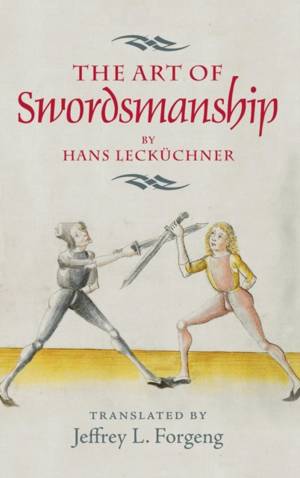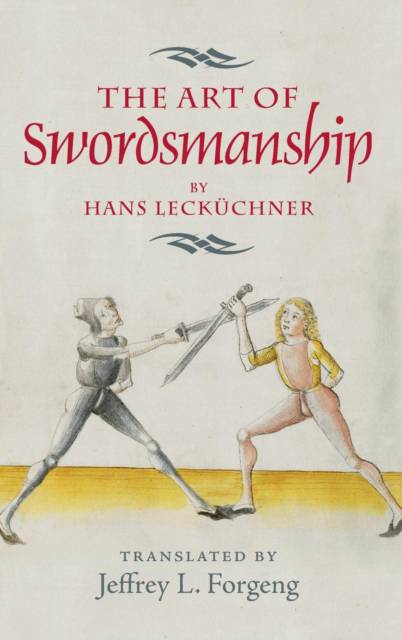
- Afhalen na 1 uur in een winkel met voorraad
- Gratis thuislevering in België vanaf € 30
- Ruim aanbod met 7 miljoen producten
- Afhalen na 1 uur in een winkel met voorraad
- Gratis thuislevering in België vanaf € 30
- Ruim aanbod met 7 miljoen producten
Zoeken
The Art of Swordsmanship by Hans Lecküchner
€ 257,95
+ 515 punten
Omschrijving
Completed in 1482, Johannes Leckuchner's Art of Combat with the "Langes Messer" (Messerfechtkunst) is among the most important documents on the combat arts of the Middle Ages. The Messer was a single-edged, one-handed utility sword peculiar to central Europe, but Leckuchner's techniques apply to cut-and-thrust swords in general: not only is this treatise the single most substantial work on the use of one-handed swords to survive from this period, but it is the most detailed explanation of the two-handed sword techniques of the German "Liechtenauer" school dating back to the 1300s. Leckuchner's lavish manuscript consists of over four hundred illustrations with explanatory text, in which the author, a parish priest, rings the changes on bladework, deceits, and grappling, with techniques ranging from life-or-death escapes from an armed assailant to slapstick moves designed to please the crowd in public fencing matches. This translation, complete with all illustrations from the manuscript, makes the treatise accessible for the first time since the author's untimely death less than a year after its completion left his major work to be lost for generations. An extensive introduction, notes, and glossary analyze and contextualize the work and clarify its technical content. Jeffrey L. Forgeng is curator of Arms and Armor and Medieval Art at the Worcester Art Museum, and teaches as Adjunct Professor of History at Worcester Polytechnic Institute.
Specificaties
Betrokkenen
- Vertaler(s):
- Uitgeverij:
Inhoud
- Aantal bladzijden:
- 481
- Taal:
- Engels
- Reeks:
- Reeksnummer:
- nr. 4
Eigenschappen
- Productcode (EAN):
- 9781783270286
- Verschijningsdatum:
- 16/07/2015
- Uitvoering:
- Hardcover
- Formaat:
- Genaaid
- Afmetingen:
- 152 mm x 231 mm
- Gewicht:
- 539 g

Alleen bij Standaard Boekhandel
+ 515 punten op je klantenkaart van Standaard Boekhandel
Beoordelingen
We publiceren alleen reviews die voldoen aan de voorwaarden voor reviews. Bekijk onze voorwaarden voor reviews.







